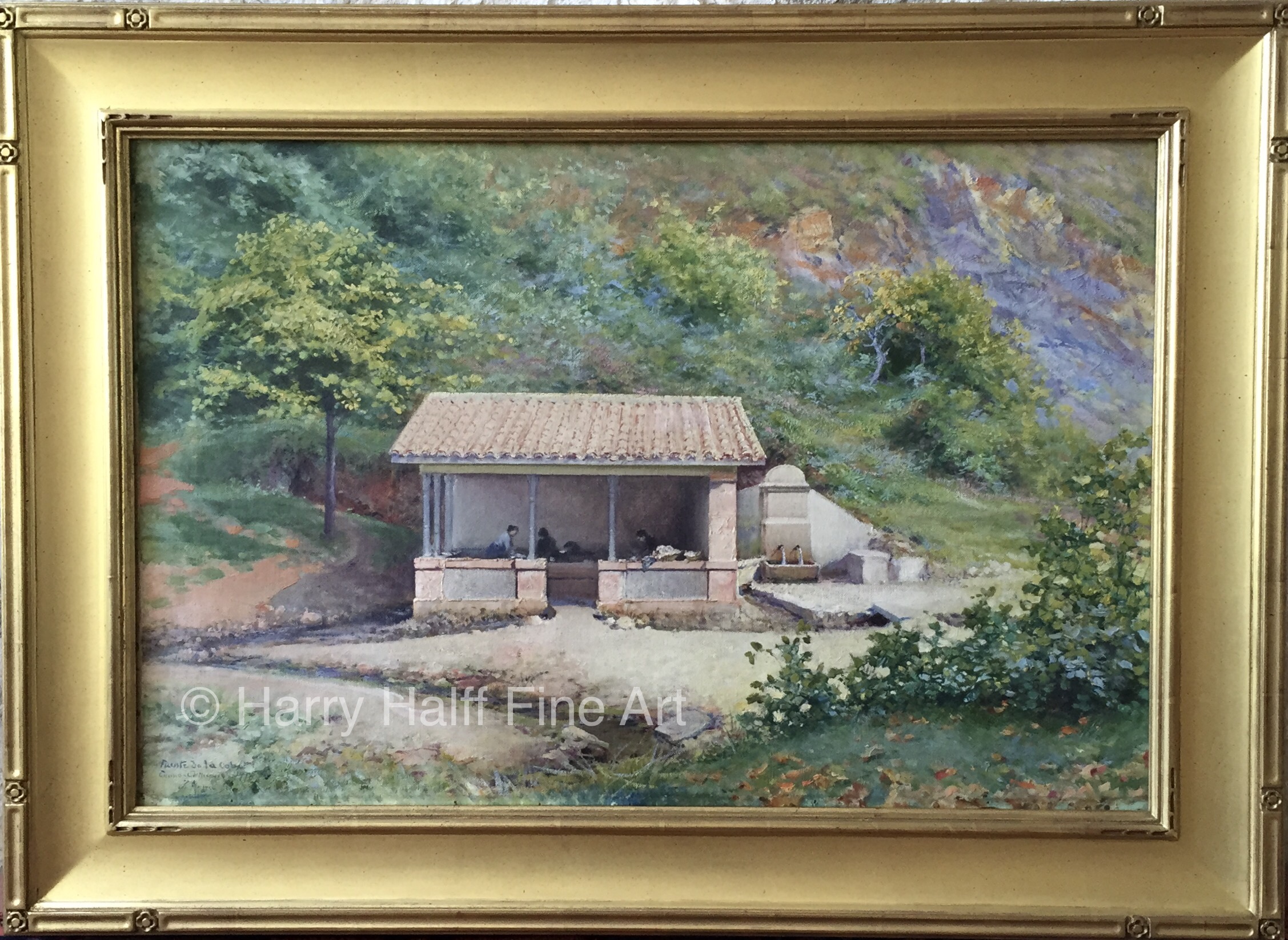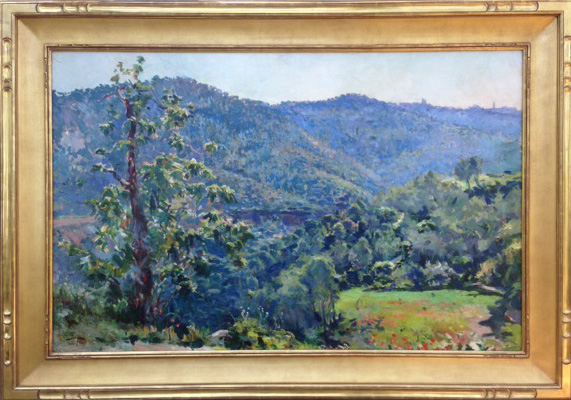Jose Arpa: Painting in the Americas Part 2
Getting to Know Jose Arpa: Personality and Personal Life

Arpa was that of a bon vivant. He had a sunny disposition and was well liked by his contemporaries. Later in life he was known by many in San Antonio as Uncle Arpa. He was a member of the Brass Mug Club with other prominent artists in San Antonio such as the Onderdonks, Ernest Raba and Charles Simmang, and was an avid fisherman. Arpa evidently did not mind raising a glass now and then, and was often seen with a pipe.
Painting Brought Arpa Joy
Photographs of Arpa show the obvious pleasure he took in his paintings and in life. When Arpa painted his self-portrait in 1900 in Puebla, Mexico, he portrayed himself as a well-dressed, successful man and used the portrait to both display his ability as an artist and establish himself socially.
From Humble Beginnings Come Great Things
Although he had come from humble origins in Sevilla, Spain, when he arrived in Mexico in 1895 at the behest of the Mexican government, he was already a successful artist and had won prizes in Spain and exhibited internationally.
Befriending Robert Onderdonk
He found patrons in an Asturian family living in Mexico, the Quijano y Riveros, and through their friendship traveled to San Antonio in 1899. It was there that he joined the artistic circle of Robert Onderdonk and the photographer Ernest Raba, and became friends with the prominent Guenther family.
Arpa’s Travels
Arpa traveled and painted in Mexico, Texas, Arizona, and Spain between 1895 and 1931, before he returned to Spain permanently. During his time in the Americas he founded an art school in San Antonio and exhibited throughout Mexico and the United States. He won many awards including three categories in the Dais Competition in San Antonio in 1927, 1928, and 1929. The Davis Competition award was the highest purchase prize in the United States at that time. Jose Arpa is represented in numerous museums in Texas and Spain.
To see works currently available for sale by Jose Arpa, click here.


 For our second blog we have decided to focus on our “Jose Arpa: Painting in the Americas” exhibition, which was held March 25th through April 9th, 2010. Paintings in the exhibit were drawn from Jose Arpa’s body of works from Mexico, Texas, and Arizona; their unifying feature is the strong southern light. His canvases are painted with whites, beiges, and reds in the Earth and buildings , cool greens in the heavy vegetation, and dark blues and purples setting the shadows. Arpa often chose what seem to be the most difficult compositions and handled them effortlessly. One of the pleasures of viewing his canvases is seeing delicate colors juxtaposed together and intimate spaces created with only a few quick brushstrokes.
For our second blog we have decided to focus on our “Jose Arpa: Painting in the Americas” exhibition, which was held March 25th through April 9th, 2010. Paintings in the exhibit were drawn from Jose Arpa’s body of works from Mexico, Texas, and Arizona; their unifying feature is the strong southern light. His canvases are painted with whites, beiges, and reds in the Earth and buildings , cool greens in the heavy vegetation, and dark blues and purples setting the shadows. Arpa often chose what seem to be the most difficult compositions and handled them effortlessly. One of the pleasures of viewing his canvases is seeing delicate colors juxtaposed together and intimate spaces created with only a few quick brushstrokes.